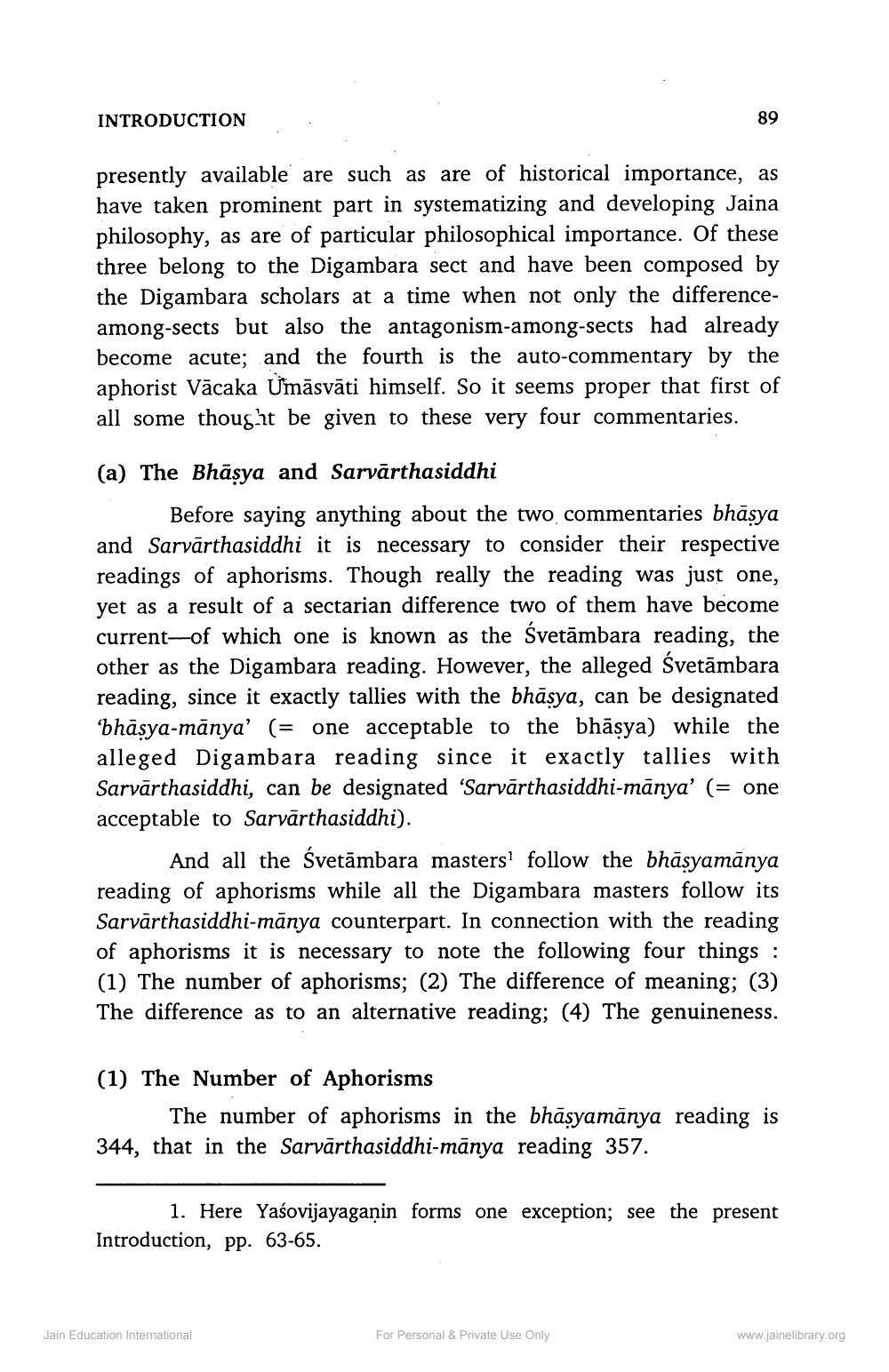________________
INTRODUCTION
89
presently available are such as are of historical importance, as have taken prominent part in systematizing and developing Jaina philosophy, as are of particular philosophical importance. Of these three belong to the Digambara sect and have been composed by the Digambara scholars at a time when not only the differenceamong-sects but also the antagonism-among-sects had already become acute; and the fourth is the auto-commentary by the aphorist Vācaka Umāsvāti himself. So it seems proper that first of all some thought be given to these very four commentaries.
(a) The Bhāsya and Sarvārthasiddhi
Before saying anything about the two commentaries bhāsya and Sarvārthasiddhi it is necessary to consider their respective readings of aphorisms. Though really the reading was just one, yet as a result of a sectarian difference two of them have become current-of which one is known as the Svetāmbara reading, the other as the Digambara reading. However, the alleged Svetāmbara reading, since it exactly tallies with the bhāsya, can be designated 'bhāsya-mānya' (= one acceptable to the bhāsya) while the alleged Digambara reading since it exactly tallies with Sarvārthasiddhi, can be designated 'Sarvārthasiddhi-mānya' (= one acceptable to Sarvārthasiddhi).
And all the Śvetāmbara masters? follow the bhāsyamānya reading of aphorisms while all the Digambara masters follow its Sarvārthasiddhi-mānya counterpart. In connection with the reading of aphorisms it is necessary to note the following four things : (1) The number of aphorisms; (2) The difference of meaning; (3) The difference as to an alternative reading; (4) The genuineness.
(1) The Number of Aphorisms
The number of aphorisms in the bhāsyamānya reading is 344, that in the Sarvārthasiddhi-mānya reading 357.
1. Here Yaśovijayaganin forms one exception; see the present Introduction, pp. 63-65.
Jain Education International
For Personal & Private Use Only
www.jainelibrary.org




